SAP SOX Compliance
Filter By
Browse By
- SAP Analytics and AI
- SAP Application Development and Integration
- All SAP Application Development and Integration
- SAP ABAP
- SAP ABAP Development Tools
- SAP ABAP Test Cockpit
- SAP API Management
- SAP BAPI
- SAP Basis
- SAP BRF
- SAP Business Application Studio
- SAP CMS
- SAP Design Studio
- SAP Development Tools
- SAP DevOps
- SAP EAI
- SAP EDI
- SAP Extension Suite
- SAP Fiori
- SAP Fiori Elements
- SAP Integration Suite
- SAP Low Code Application Development
- SAP Low Code Automation
- SAP Netweaver
- SAP Release Management
- SAP UI5
- SAP Web Application Server
- SAP Web IDE
- SAP Business Process Management
- SAP Center of Excellence
- SAP CIO
- SAP Customer Experience
- SAP Data and Data Management
- All SAP Data and Data Management
- SAP BW
- SAP BW/4HANA
- SAP Crystal Reporting
- SAP Data Archiving
- SAP Data Center
- SAP Data Governance
- SAP Data Integration
- SAP Data Migration
- SAP Data Quality
- SAP Data Services
- SAP Data Strategy
- SAP Data Visualization
- SAP Data Warehouse Cloud
- SAP DMS
- SAP Document Control
- SAP EIM
- SAP ETL
- SAP ETL Tools
- SAP HANA
- SAP HANA Administration
- SAP HANA Deployment Infrastructure
- SAP HANA Studio
- SAP Master Data
- SAP Master Data Governance
- SAP MDM
- SAP Enterprise Architect
- SAP Enterprise Asset Management
- SAP ERP
- SAP Finance
- All SAP Finance
- SAP Accounting
- SAP AR AP
- SAP Asset Accounting
- SAP Billing Systems
- SAP BPC
- SAP BRIM
- SAP Cash Management
- SAP Central Finance
- SAP Controlling
- SAP COPA
- SAP Cost Center Accounting
- SAP e-invoicing
- SAP FICO
- SAP Finance Automation
- SAP Financial Closing Cockpit
- SAP Financial Consolidation
- SAP Financial Planning
- SAP FX Risk
- SAP General Ledger
- SAP Global Tax Management
- SAP Hyperion
- SAP Order to Cash
- SAP Payment Processing
- SAP Profitability Analysis
- SAP Rebate Management
- SAP S/4HANA Finance
- SAP Universal Journal
- SAP Governance Risk and Compliance
- SAP Human Capital Management
- SAP Intelligent Technologies
- SAP Platform and Technology
- All SAP Platform and Technology
- SAP Business Technology Platform
- SAP Cloud Connector
- SAP Cloud Integration Platform
- SAP Cloud Migration
- SAP Cloud Platform
- SAP Cloud Providers
- SAP Cloud Strategy
- SAP Container Platform
- SAP Digital Asset Management
- SAP Digital Integration Hub
- SAP Digital Signature
- SAP HANA Enterprise Cloud
- SAP HEC
- SAP Hyperscalers
- SAP Infrastructure
- SAP Messaging
- SAP Smart Forms
- SAP Quality and Testing
- SAP Security
- SAP Spend Management
- SAP Supply Chain Management
- All SAP Supply Chain Management
- SAP APO
- SAP Asset Management
- SAP Business Network
- SAP Digital Manufacturing Cloud
- SAP Digital Twin
- SAP EWM
- SAP IBP
- SAP Inventory Management
- SAP Label Printing
- SAP Logistics
- SAP Manufacturing
- SAP Manufacturing Automation
- SAP MES
- SAP MII
- SAP MM
- SAP MRO
- SAP MRP
- SAP Order Management
- SAP Plant Maintenance
- SAP PLM
- SAP Production Planning
- SAP S&OP
- SAP SD
- SAP SPM
- SAP Supply Chain Planning
- SAP Track and Trace
- SAP Transportation Management
- SAP System Administration
What Is SOX Compliance?
The Sarbanes-Oxley Act (SOX) of 2002 requires financial transparency by U.S. public companies, ensuring their data is secure and accurate. Drafted by Congressmen Paul Sarbanes and Michael Oxley following several U.S. corporate and financial scandals, SOX compliance means having a formalized system for internal controls — one that provides full financial transparency.
In a blog post, the criticality of SAP governance, risk management, and compliance (GRC) for SOX compliance is explored. The author points out that two sections (Section 302 and Section 404) are the most important and relevant for SAP GRC and finance users.
What Is SOX Compliance?
The Sarbanes-Oxley Act (SOX) of 2002 requires financial transparency by U.S. public companies, ensuring their data is secure and accurate. Drafted by Congressmen Paul Sarbanes and Michael Oxley following several U.S. corporate and financial scandals, SOX compliance means having a formalized system for internal controls — one that provides full financial transparency.
In a blog post, the criticality of SAP governance, risk management, and compliance (GRC) for SOX compliance is explored. The author points out that two sections (Section 302 and Section 404) are the most important and relevant for SAP GRC and finance users.
An SAP SOX compliance checklist should address the following:
- Segregation of duties
- SAP GRC monitoring
- Safeguard SOX audit trails against emergency access
- Automate SAP audit reporting
Further Resources for SAPinsiders
Accounting & Finance Expands Its Influence. In this article, learn how UGI Utilities developed a strategic roadmap to better anticipate internal and external demands on the business — including regulations such as SOX. The utility shares how using BlackLine and its task functionality provides intuitive controls for SOX compliance.
Beyond SOX: Addressing non-financial risks through SAP configuration and sound supporting processes. Often, compliance is a focal point during SAP implementation to ensure compliance with financial reporting and regulations, such as SOX. However, there are optional SAP controls that could provide even more value to companies’ SAP system and supporting processes. In this session, Steve Biskie from RSM shares how to minimize and mitigate operational and strategic risks through SAP configuration. Understand who in the organization should be involved in recommending and validating control changes, and how to set up an appropriate cross-functional team to ensure decisions are sound and don’t introduce other risks.
Bridging the Cybersecurity Gap in IT General Controls (ITGC). Compliance with regulations like SOX often require a set of controls in place to mitigate risks to the integrity of financial reporting. Current ITGC testing performed by internal and external auditors is only focused on one slice of access risk. In this session, Brian Tremblay from Onapsis shares why it’s critical to understand the threats that exist to your SAP system beyond the current ITGC scope and how they relate to compliance with SOX.
A vendor that can help SAP customers with SOX compliance is Appsian Security. The provider offers a single platform for automating how users secure user identity, govern access, detect and prevent fraud, and demonstrate compliance with SOX, the General Data Protection Regulation, and more across critical business applications.
969 results
-

SAP S/4HANA on Your Own Terms: Shaping the Right Migration Strategy
August 27, 2025
With SAP ECC support ending soon, many organisations are under pressure to plan a well-informed transition to SAP S/4HANA. While Brownfield and Greenfield remain the traditional approaches, a third path called Selective Data Transition (SDT) is increasingly being considered, particularly for businesses with complex system landscapes. This approach is supported by Enterprise Transformer, a software developed…
-

Manage Multiple Compliance Initiatives Effectively Leveraging Shared Master Data
Published: 11/March/2010
Reading time: 14 mins
When different teams work with different procedures in different software solutions to address the many internal policies and external regulations to which a company is subject, it leads to inconsistent master data, unnecessary costs, and a lack of management visibility. SAP Business Objects Process Control 3.0 comes with a global master data catalogue and a...…
-

Manage Multiple Compliance Initiatives Using the Multicompliance Framework in SAP Process Control 10.0
Published: 12/July/2012
Reading time: 16 mins
Learn how different compliance initiatives can coexist within a central compliance management repository while harnessing existing master data. This leads to a more efficient regulatory adherence process. Key Concept Compliance initiatives are a set of regulations and legislations that an enterprise is expected to adhere to strictly in the process of conducting its business activities....…
-
-

Reduce Costs for Compliance by Implementing a Risk-Based Internal Control Solution
Published: 04/February/2010
Reading time: 19 mins
Costs for compliance and fraud prevention have risen significantly in recent years and with the current economic situation we’re likely to manage more regulations in the future, further driving costs up. Companies relish efficiency in the GRC space to garner the true benefits of compliance. One means of more efficient compliance is an integrated solution...…
-

Optimize Your Statutory Reporting Tasks Using SAP S/4HANA for Advanced Compliance Reporting
Published: 30/December/2017
Reading time: 20 mins
In multinational organizations, reporting requirements are increasing day by day. Keeping track of all the reports generated and submissions can consume a lot of time and resources. The reporting format also changes over time due to changing regulations, and compliance with this format is of the utmost importance. Learn how to use SAP S/4HANA for...…
-

How Can Ensuring SAP Compliance Help Lead To Business Success – The Critical Role of Compliance in Today’s Business Landscape
Reading time: 3 mins
In today’s business landscape, prioritizing compliance not only safeguards operational integrity and reputation but also fosters trust among stakeholders, making it essential for sustainable success and risk mitigation.
-

Enhance the Compliance Process and Regulatory Reporting in Your Organization with Disclosure Survey
Published: 19/September/2014
Reading time: 17 mins
Kehinde Eseyin shows how implementing SAP Process Control 10.1’s disclosure survey in your business environment enhances transparency, documentation, and adherence to disclosure requirements. Key Concept Disclosure survey is a new type of survey in SAP Process Control 10.1 that is used to perform assessments at different entity levels – organization, control, and subprocess. The need...…
-
-

Remediate Issues within Financial or Operational Compliance Initiatives in a Single System of Record
Published: 16/August/2010
Reading time: 13 mins
Too often, controls are managed using inadequate tools (e.g., point solutions, document repositories, and spreadsheets) that require too much manual tracking and updating. With SAP BusinessObjects Process Control 3.0, you can streamline issue identification and remediation with automated task notification and workflow-driven remediation plans. Key Concept SAP BusinessObjects Process Control 3.0 comes with an advanced...…
-

Analyze Segregation of Duties in Legacy Systems with Compliance Calibrator
Published: 15/April/2008
Reading time: 23 mins
Starting with Compliance Calibrator 5.1, and continuing with versions 5.2 and 5.3, you can connect Compliance Calibrator to non-SAP systems to perform Segregation of Duties analysis. See how to set up Compliance Calibrator to do this in six steps. Key Concept Compliance Calibrator is one of SAP’s solutions for GRC. It provides real-time controls compliance...…
-

Take Advantage of Automated Controls for Continuous Monitoring and Compliance Testing
Published: 14/May/2010
Reading time: 17 mins
Learn how the different options for control automation included in the automated control framework in SAP BusinessObjects Process Control 3.0 turn tedious and error-prone manual tests into a repeatable automated process. Key Concept A centralized and automated approach to continuous control monitoring and testing of effectiveness can considerably reduce effort, cost, and reliance on external...…
Become a Member
Unlimited access to thousands of resources for SAP-specific expertise that can only be found here.
Related Vendors
Your request has been successfully sent

